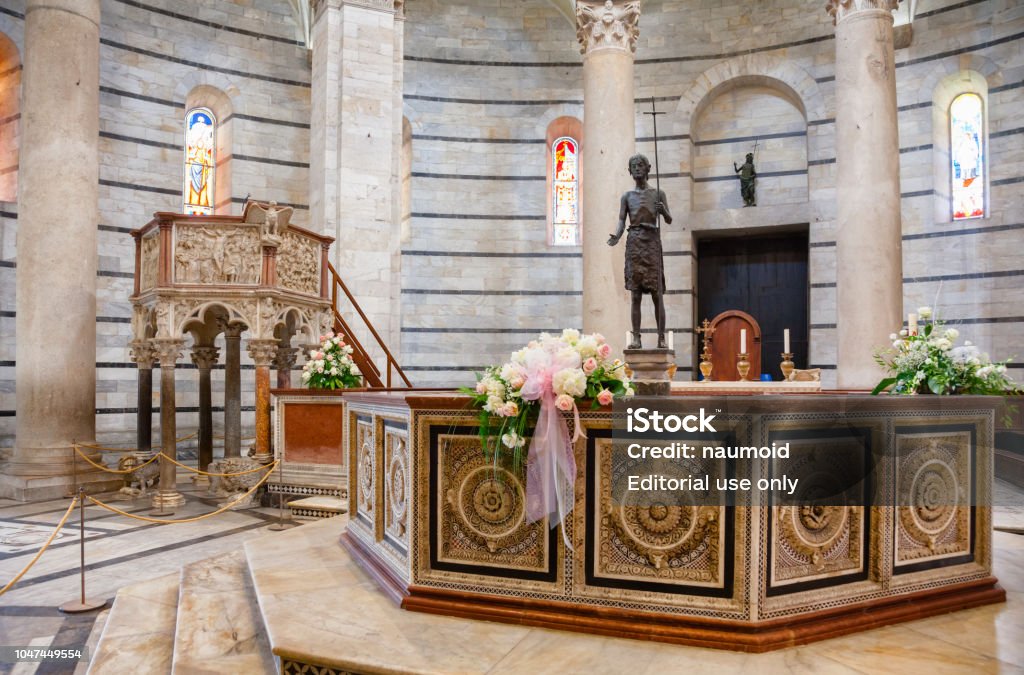
Interior Del Baptisterio De Pisa Con La Fuente Y El Púlpito Piazza Dei Miracoli Piazza Del Duomo
This is the Pulpit by Nicola Pisano in the Pisa Baptistry, which was finished by about 1260. Female: A pulpit would be a place where the priest would stand to deliver sermons. Male: That's right. They would climb up and these reliefs here are essentially a low wall. Then this eagle supports a little stand where a book or other writings could be.

Il Pulpito di Giovanni Pisano in Sant’Andrea a Pistoia restaurato grazie a Friends of Florence
Battistero del Duomo di Pisa, XII-XIV secolo. Il Pulpito del Battistero di Pisa. Intorno al 1260, per il Battistero cittadino, Nicola eseguì e firmò un grande pulpito marmoreo, un'opera articolata e complessa cui iniziò a lavorare probabilmente già dal 1257.L'artista aveva all'epoca all'incirca 45 anni, era dunque un uomo maturo e all'apice della sua carriera e certamente aveva.

Pulpito del Battistero del Duomo di Pisa Pisa, Architettura religiosa, Luoghi meravigliosi
Púlpito Baptisterio de Pisa Esta obra de Nicola Pisano realizada entre los años 1259 y 1260 va a ser la primera de una esplendorosa serie de grandes púlpitos repartidos por la región italiana de la Toscana.
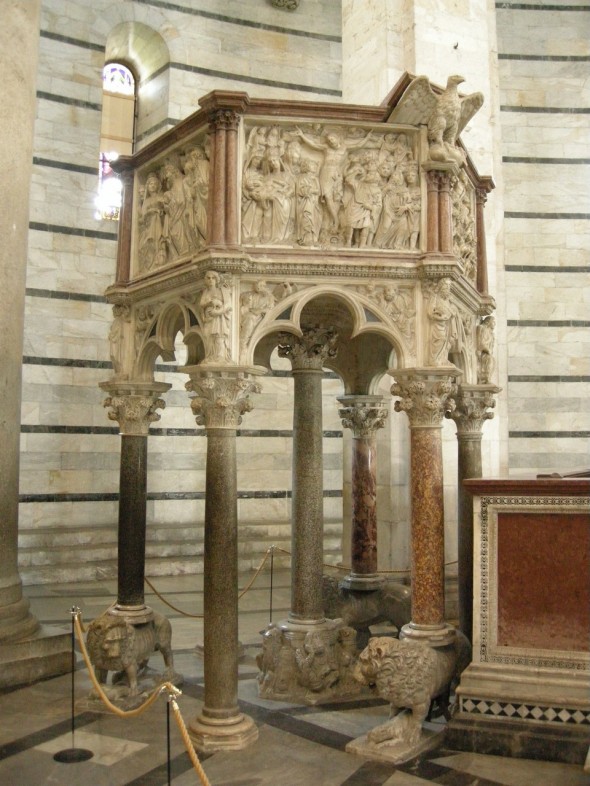
Nicola Pisano’s Baptistery Pulpit in Pisa
The following 45 files are in this category, out of 45 total. Pisa, battistero, pulpito di Nicola Pisano, 2.JPG 2,592 × 1,944; 2.21 MB Púlpit del baptisteri de Pisa.JPG 3,355 × 2,634; 1.7 MB Baptisterio púlpito 06.JPG 5,184 × 3,456; 3.79 MB Pulpit - Baptistry - Pisa 2014 B.jpg 2,078 × 1,487; 2.01 MB

púlpito del Baptisterio de la Catedral de Siena de Nicola Pisano. Escultura gótica italiana
Galego: Púlpito do baptisterio de Pisa, Italia. Español: Púlpito del baptisterio de Pisa, Italia. English: Pulpit in the baptistry of Pisa, Italy. Date: 22 October 2019, 13:36:37:. Pulpito del battistero di Pisa; Metadata. This file contains additional information such as Exif metadata which may have been added by the digital camera.
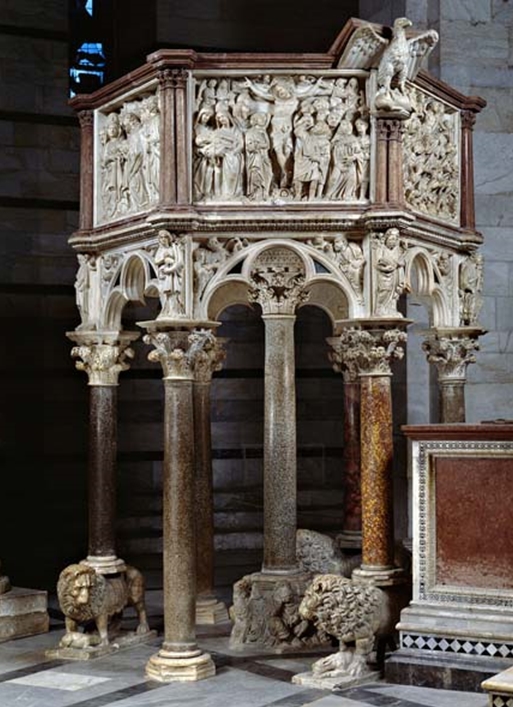
Púlpitos del Baptisterio de Pisa y la Catedral de Siena. ARTECREHA
Coordenadas: 43°43′24″N 10°23′39″E El Baptisterio de Pisa, dedicado a San Juan el Bautista, está frente a la catedral en el extremo occidental de la Piazza dei Miracoli. Comenzó a construirse en el año 1152, y fue concluido en el 1363. Es el ejemplo de baptisterio independiente más reconocido del mundo.
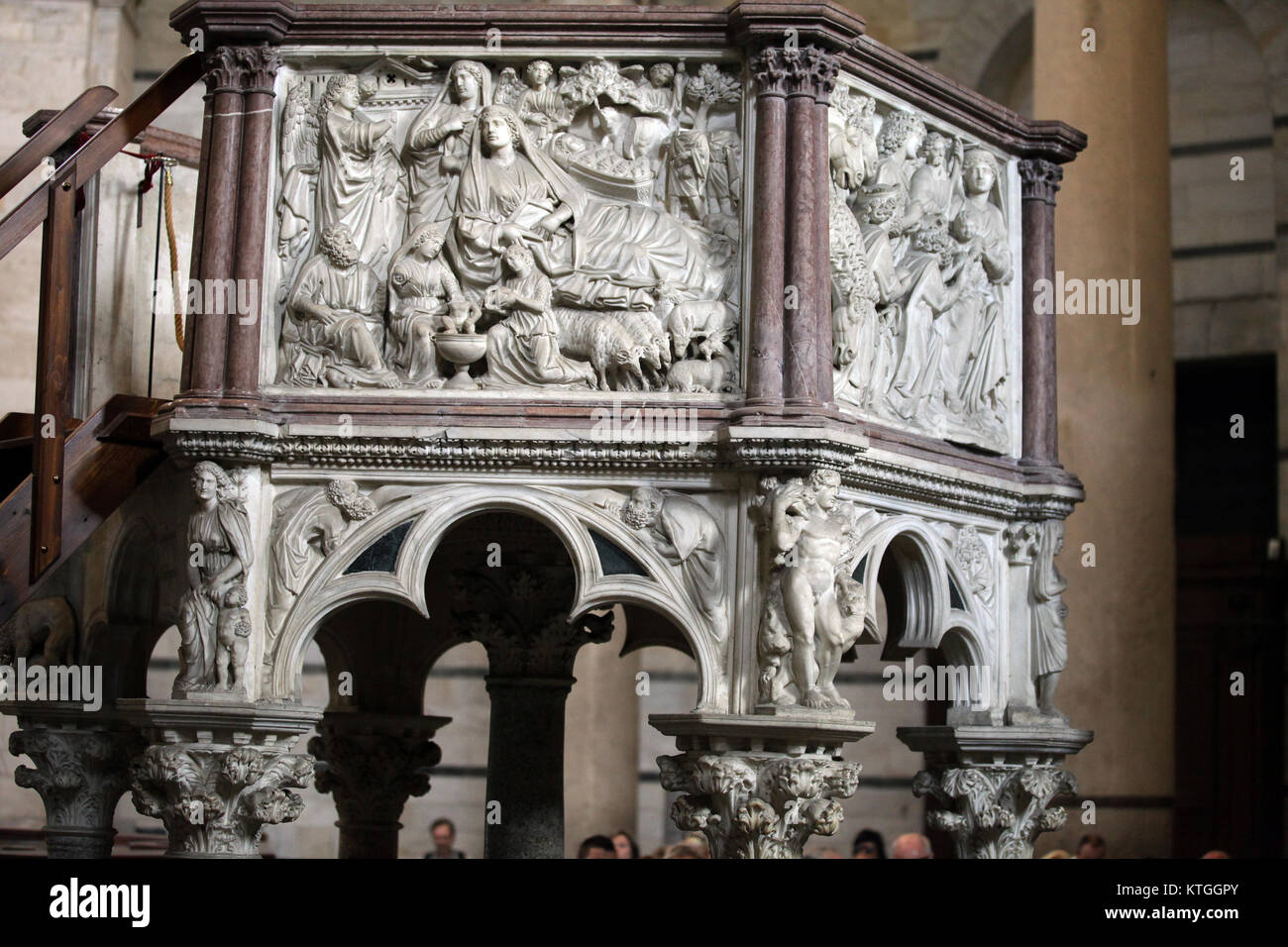
Púlpito de Nicola Pisano en el baptisterio de Pisa Fotografía de stock Alamy
Media in category "Pulpit in the Baptistry (Pisa)" The following 30 files are in this category, out of 30 total. Bapistry Pulpit (5986667289).jpg 540 × 720; 300 KB Baptisteri de Pisa, púlpit.JPG 2,584 × 3,662; 1.68 MB Battistero Pisa interno.jpg 640 × 480; 103 KB Pisa, battistero di San Giovanni (61).jpg 5,184 × 3,456; 7.43 MB

Púlpito para la Catedral de Pisa en 1302 de Giovanni Pisano. Gótico italiano. UD. 6 La
Pulpit in the Pisa Baptistery by Nicola Pisano, 1260. The pulpit in the Pisa Baptistery was completed by Nicola Pisano and his assistants in 1260, and has long been regarded as a landmark in Italian art, especially for its large relief panels around the platform. For Kenneth Clark the pulpit was "that false dawn of the Renaissance", as its innovations were not followed up for some time.
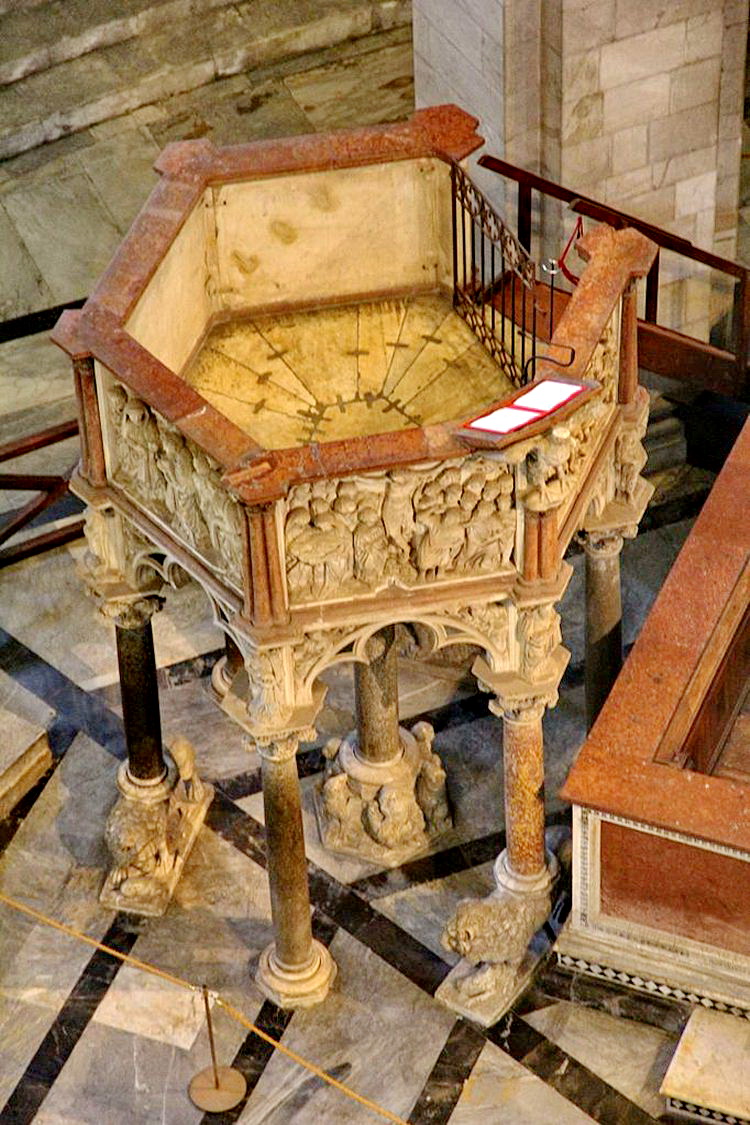
Pulpito Duomo de Pisa (1270) Nicola Pisano
El púlpito fue concebido de modo que sirviera para apoyar plásticamente la predicación de la palabra de Dios, por lo que se trata del primer ejemplo de una nueva forma de "soporte de imágenes", que había cobrado importancia a raíz de la predicación de los franciscanos, muy dados a la ilustración con imágenes, o bien tablas o pancartas, durante l.

Nicola Pisano Pulpit, Baptistry, Pisa (1260) Artsy
Descrizione dell'opera scultorea di uno dei protagonisti della scultura italiana della seconda metà del Duecento, con particolare attenzione al pannello raff.
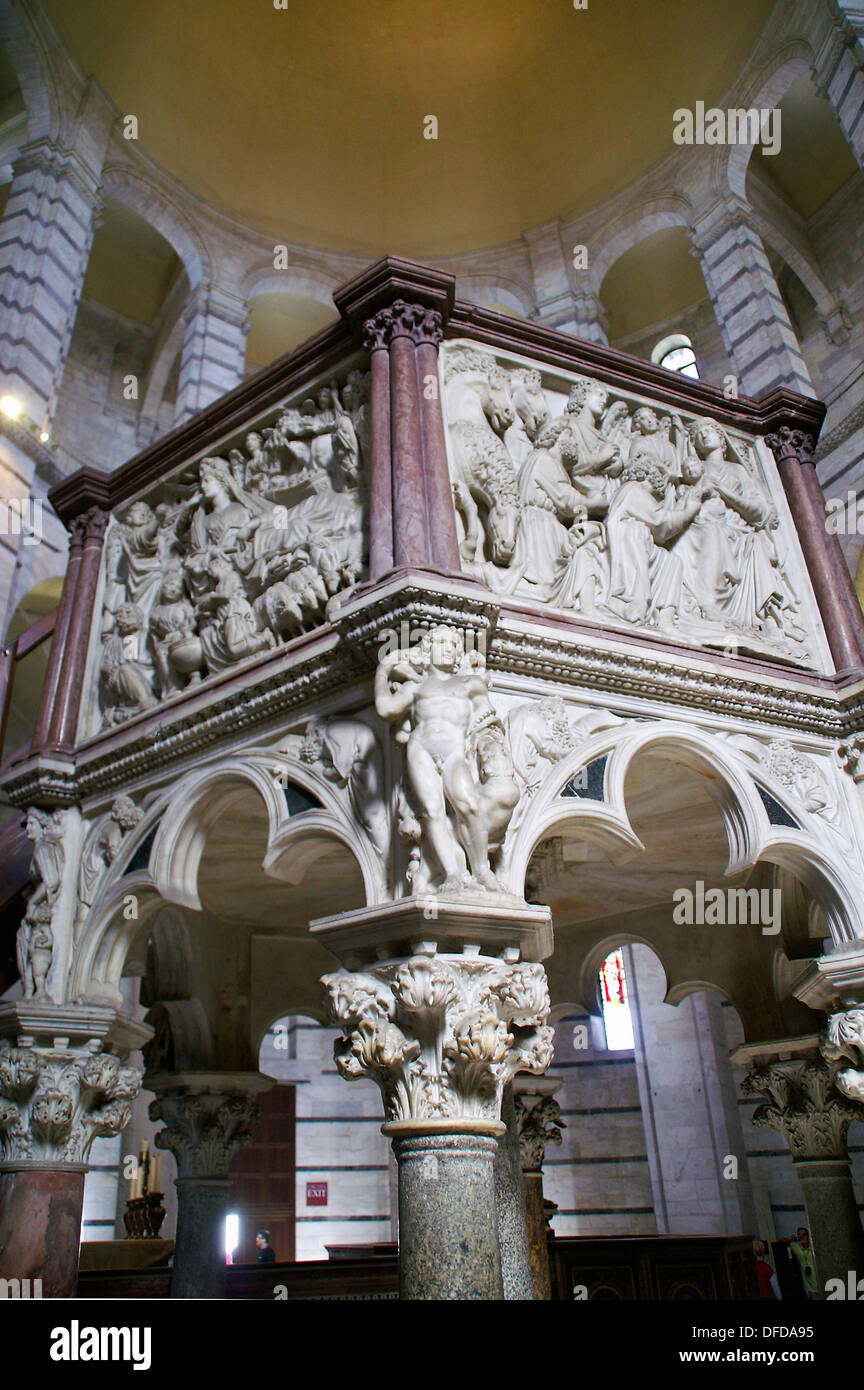
Pisa Italia Nicola Pisano púlpito dentro del baptisterio de Pisa Fotografía de stock Alamy
Púlpito del Baptisterio de Pisa Datos principales Fecha 1260 Estilo Barroco Italiano Contenidos relacionados Esta obra, autógrafa y la primera documentada del maestro Nicola Pisano , constituye un testimonio irrefutable de la madurez artística que había alcanzado por entonces el escultor .

Il Pulpito del Battistero di Pisa di Nicola Pisano Arte Svelata
Photo Nicola's pulpit is presently located in the Pisa baptistery on the southern side of the building, or to the left of the font, though originally it was probably located to the right of the font (see photo).
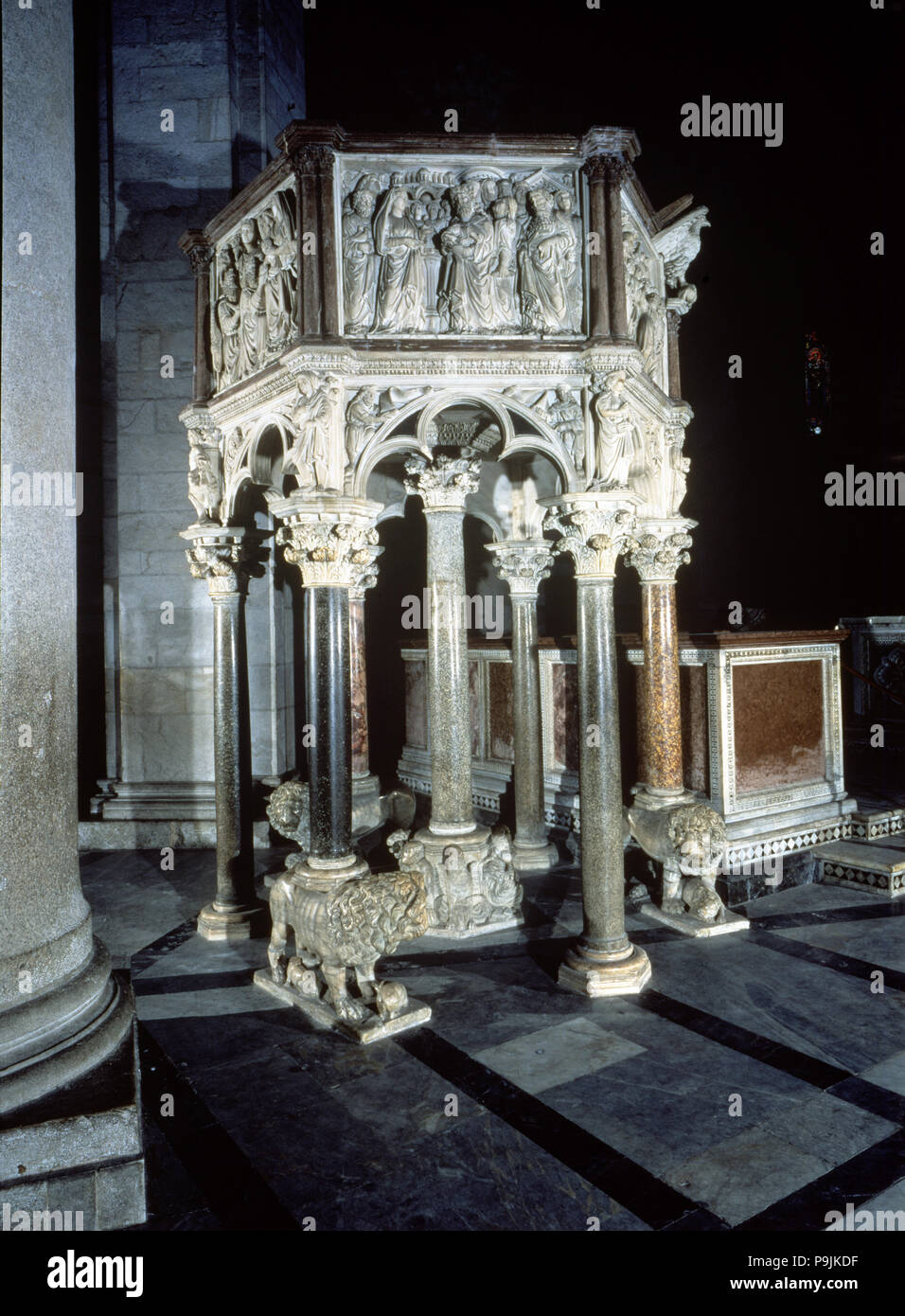
Pisa italy nicola pisano pulpit fotografías e imágenes de alta resolución Alamy
Battistero di San Giovanni Battista (Opera Primaziale pisana) The Baptistery of Pisa stands out for its considerable size: about 55 meters high and with a circumference of 107.24 meters, the largest in the world. Construction began in 1153 by Diotisalvi, who signed the building on one of the internal pillars.Circular in plan, with strong references to the Holy Sepulchre of Jerusalem, shows on.

Nicola Pisano, pulpit of the baptistery, Pisa, Italy, 12591260. Marble, 15' high. Arte
Title: Baptistery (Pulpit by N. Pisano), Pisa. Location: Pisa Baptistery. Depicted Location: Pisa Baptistery. Explore museums and play with Art Transfer, Pocket Galleries, Art Selfie, and more. Google Arts & Culture features content from over 2000 leading museums and archives who have partnered with the Google Cultural Institute to bring the.

a85Púlpito del Baptisterio de Pisa (Presentación en el temp Renacimiento italiano, Arte, Arte
Il pulpito del battistero di Pisa è un capolavoro dell'età gotica-pisana di Nicola Pisano, firmato e datato 1260, tra i capisaldi della scultura italiana. Storia. Verosimilmente iniziato. Pierluigi De Vecchi ed Elda Cerchiari, I tempi dell'arte, volume 1, Bompiani, Milano 1999.

Púlpito del Baptisterio de Pisa, obra maestra de Nicola Pisano (1260), con ayuda de sus
Nicola's first authenticated work, the signed pulpit for the Pisa Baptistery, dated 1260, fuses southern and Tuscan elements into a truly original vision, reinforcing the consensus on the artist's unknown birthplace: he was probably born in southern Italy (in two documents he is referred to as "de Apulia") and may have either been trained in Pisa or worked for Frederick II before settling in Pisa.